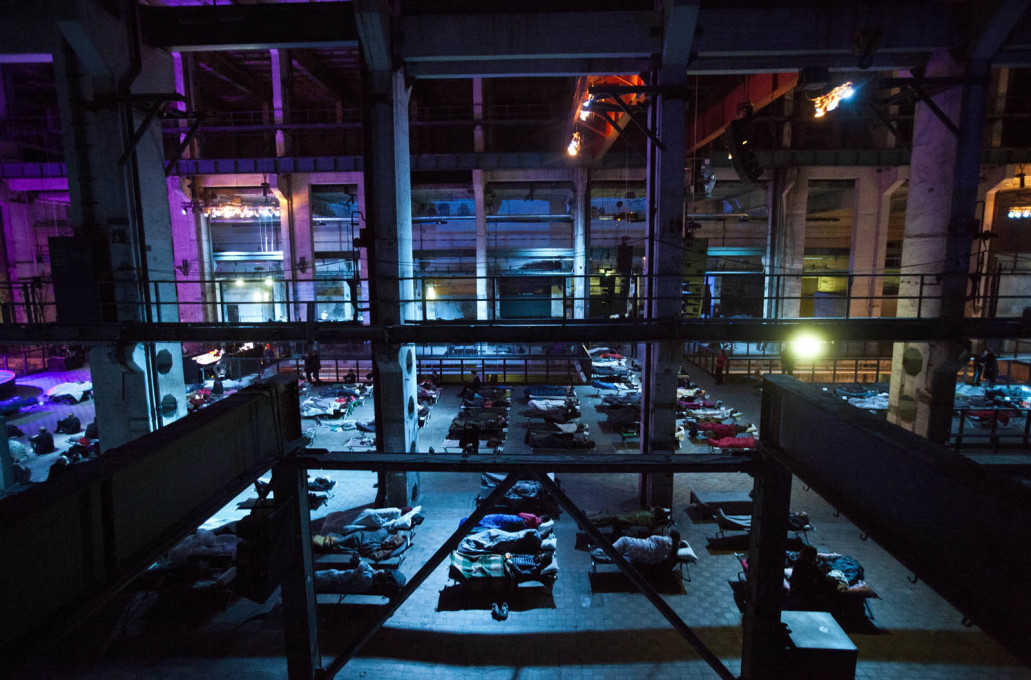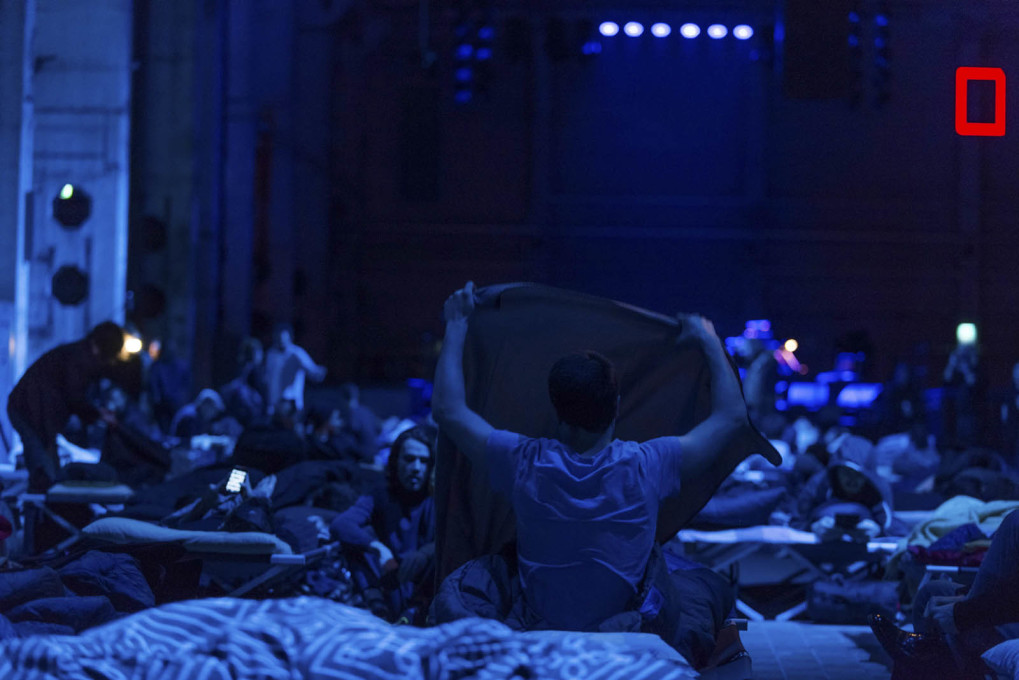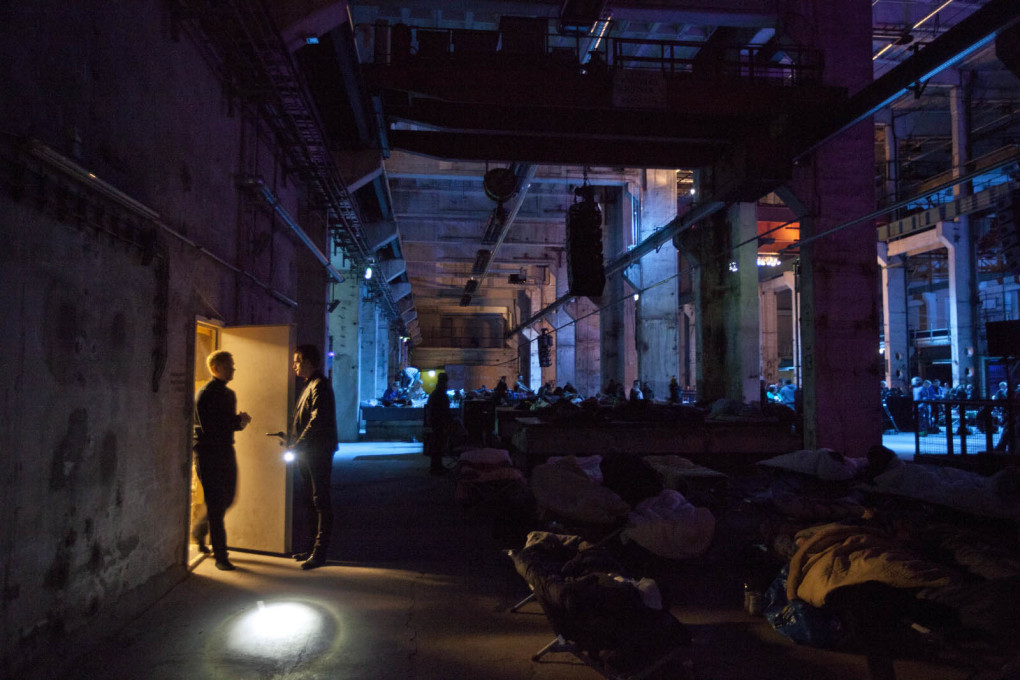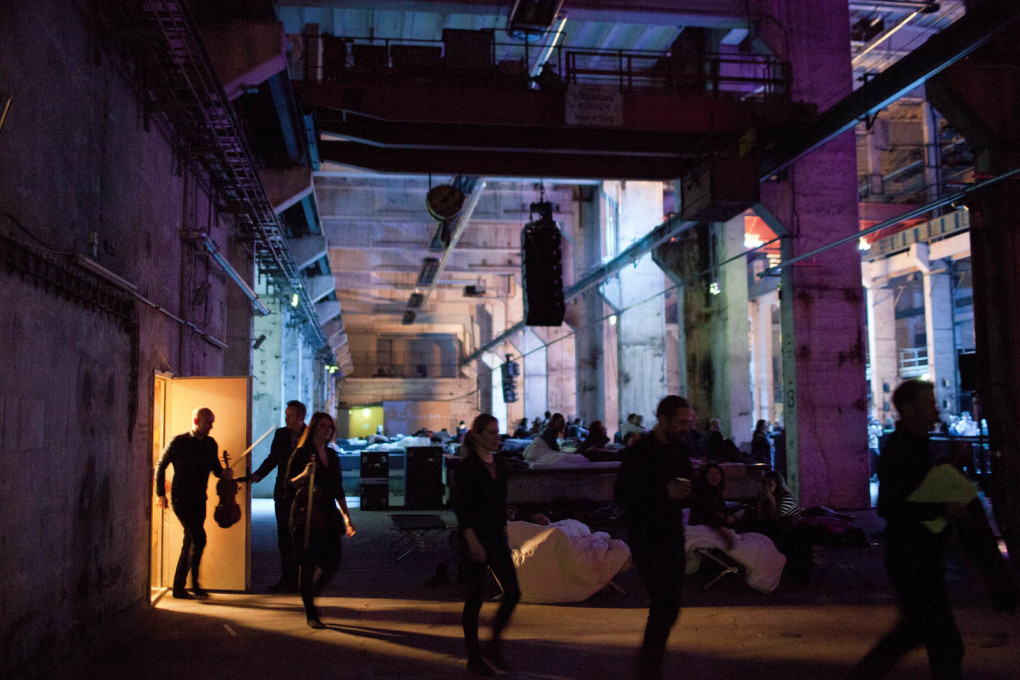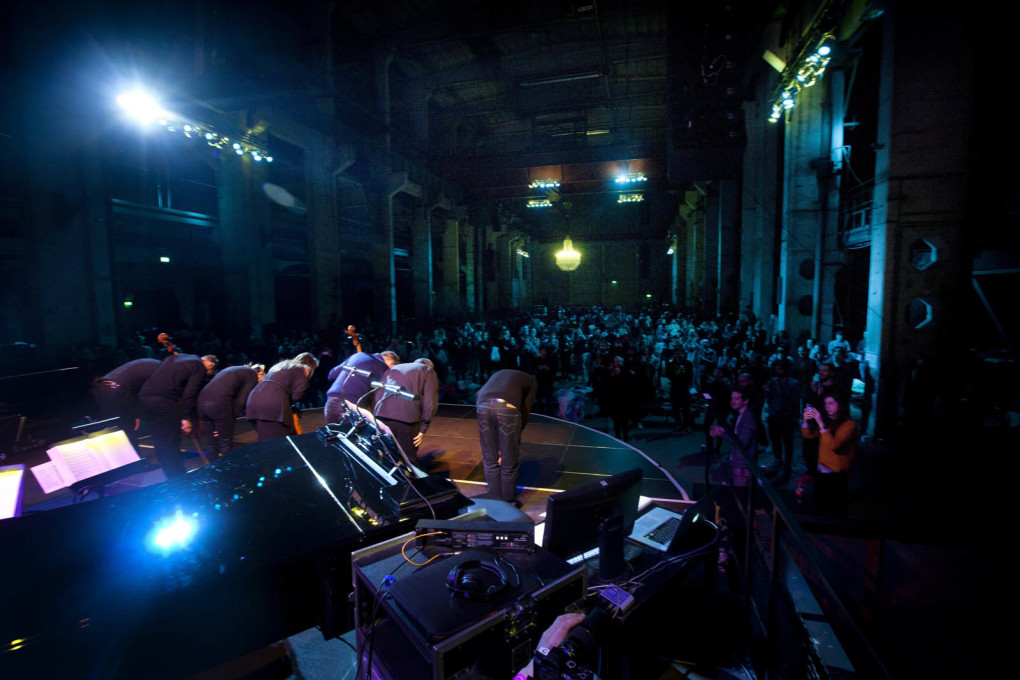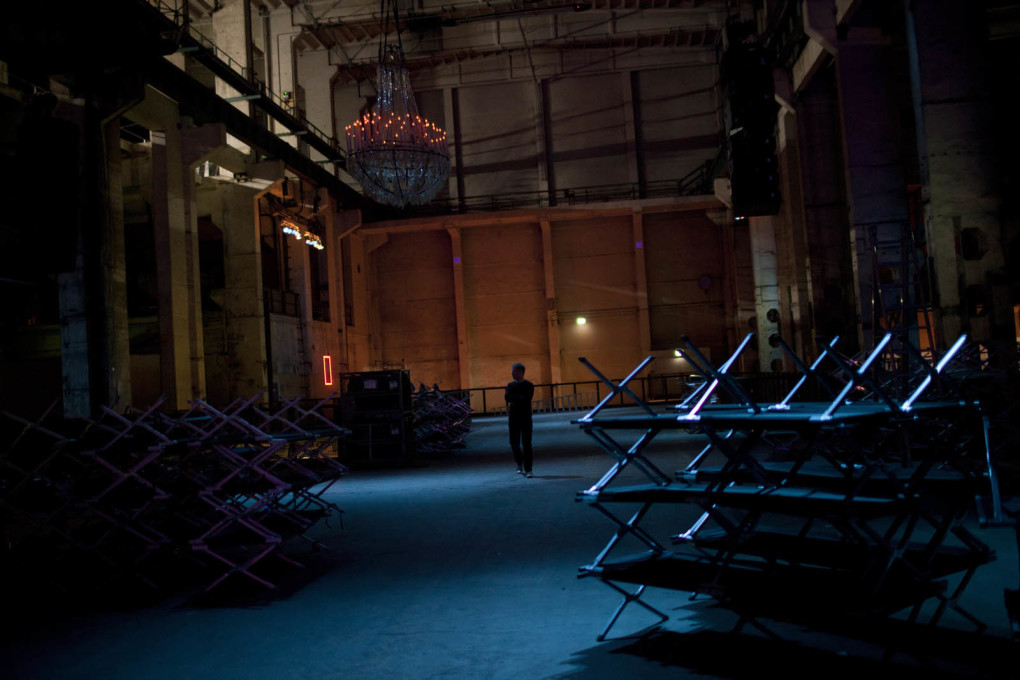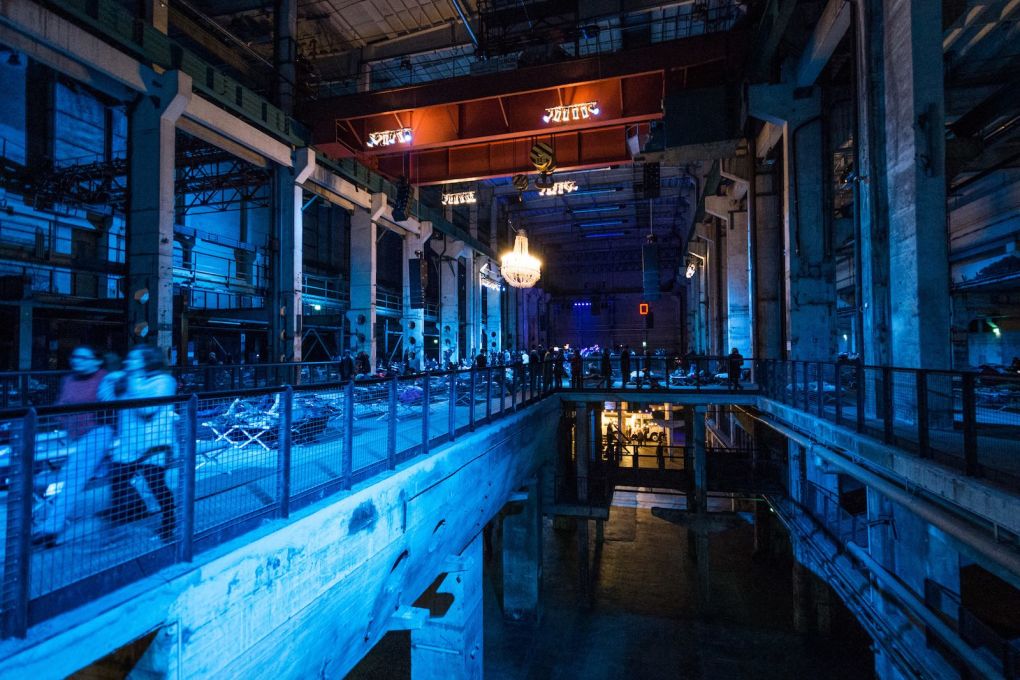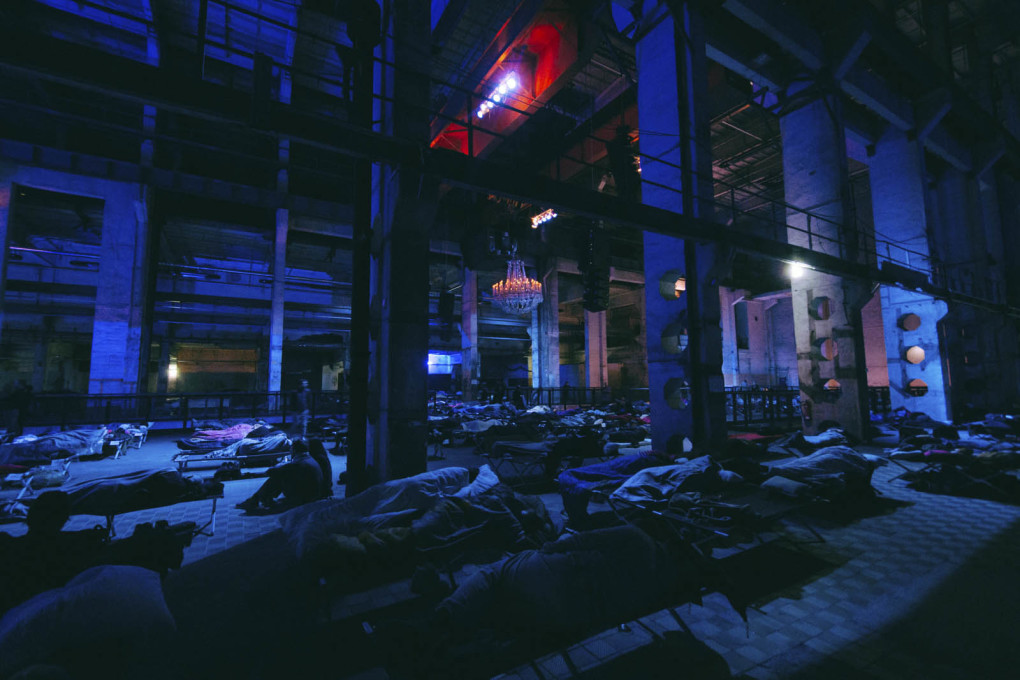In March 2016, over the course of three nights, twelve hundred people turned up at a decommissioned power station in Berlin, pillows and sleeping bags in hand, to attend a concert which would quite literally send them to sleep. Now an events and exhibition space and the home of the Tresor nightclub, the vast hall of Kraftwerk Berlin hosted the first ever full-length, eight-hour performances of Max Richter’s beguiling “lullaby for a frenetic world,” entitled simply Sleep. uncube’s Sophie Lovell and Fiona Shipwright spent the night there and, once awaked from their slumber, they spoke to the German-born British composer about mental holidays, beautiful acoustics and the toughness of post-industrial spaces.
We often talk about sleep states in terms of drifting, of not quite being able to remember. This is a pattern that is now bleeding into our waking lives too – we drift in and out of the information overload that comes from all angles, never properly taking it in. Was this something you wanted to echo or to interrupt?
One of the starting points for Sleep really was the “data universe” we now live in and my own feelings towards that, as well as what I’ve learned from conversations with other people about it. There’s a certain kind of unease to do with the fact that we spend so much of our time curating data and trying to deal with all these information streams coming at us. A lot of mental energy is expended in either engaging or not engaging with stuff; that’s a significant psychological load to bear. It’s an effort. One of the things I wanted to do with this piece was to allow a holiday from that or to maybe create a roadblock kind of situation where this large object occupies you attention completely. I think its similar to the ideas within Marina Abramovic’s durational works or the paintings of Mark Rothko, where you also have this fairly simple, large object which holds your attention and that allows for a moment of repose amidst this blizzard of data that we normally live in.
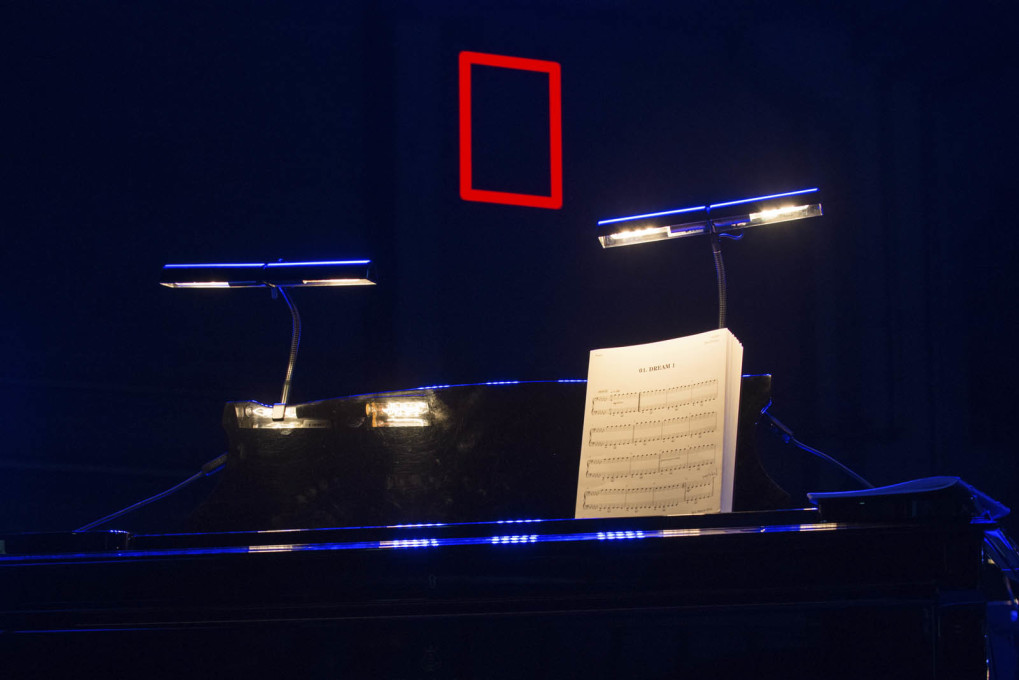
You said when introducing the concert that you composed “Sleep” in Berlin, for Berlin and, if I understand correctly, for the particular space of Kraftwerk – a vast former power station built in 1961. Was it always your intention to perform “Sleep” at Kraftwerk? Why?
Well that was always my hope – simply because of the acoustics of the space. It’s got a fantastic, beautifully dark sound with lots of lovely reverb. That interior also has a kind of toughness, which I like very much. Obviously it’s an industrial building and if you think of the image of the power station as an energy source, there’s all sort of metaphorical ideas you connect with that, but fundamentally it was really about the acoustics. Especially the way low frequencies travel around that building. The other thing is that downstairs you’ve got [legendary Berlin techno club] Tresor and when you consider the kind of all-night music that is played there and in fact the ritual quality of what goes on down there, it’s sort of like an anti-matter version of Sleep, which seemed perfect.
We noticed that not only was the sound quality superb, but that the speakers were very specifically spaced and that the sound filled the entire building in a very particular way. How strategically did you work with the entire space, in terms of placing the speakers and so on?
A lot. We spent a huge amount of time organising exactly where speakers could be positioned so that the sound would be very even throughout the space. That was the aim and I think we got quite close to that.
How many speakers were in the space in total?
Off hand I think around 60. Probably more than that actually, I’m not sure of the exact number but certainly north of 60.
It was interesting to note that the ambient sounds from the audience at Kraftwerk did not disrupt, but were actually a very integral part of the soundscape, created by the musicians but together with the audience. How much of that reached you, performing on the stage? Did you enjoy the “collaboration”?
I didn’t mind hearing any of those ambient sounds as I’m actually very interested in the audience. The way people connect to the music, the way they interact with it is the point of live performance. Live performance is always an experiment, always a one-time experience and it’s always interesting to find out what happens in that one time. So any kind of audience noises or noises from the building that were happening in the space, I found really interesting. That’s feedback that you want, something that allows you to get a sense of what people are thinking.
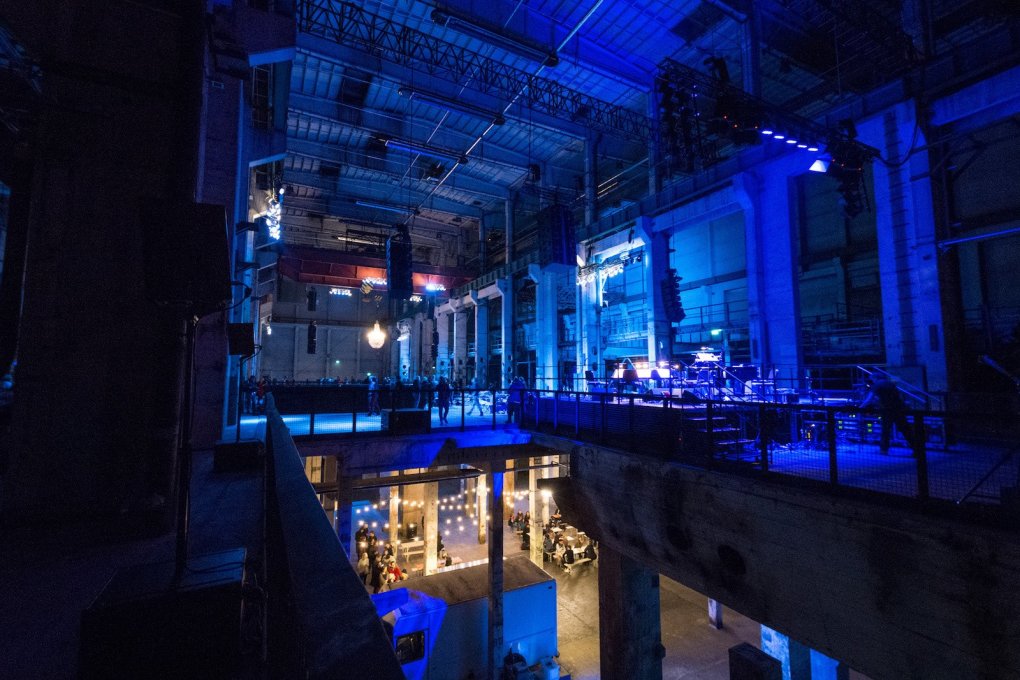
How important was it to you that people could still walk around the space once the performance began? We were struck by the fact that there were no barriers, even right up by the stage.
I think that’s really important. For me, one of the things that I find troubling about classical musical performance in particular is that there are all sorts of rules: you have to sit quietly, you may not talk, you can clap at the end but not between movements and so on… I get why there are rules involved and understand that they’re there to allow people to listen carefully to what is usually very quiet, unamplified music, but nowadays they just seem oppressive and very much from another time, another political era. I’ve often performed in non-traditional spaces, such as galleries and factories, and have found that if you’re going into a space like that they always have a “blank slate” quality to them and as such it’s obvious that there aren’t any rules. Because of that, the performance becomes much more like a consensual, exploratory experience. That’s what music – what any creative work – should be about. The fact that people were walking around, listening from different places in the space – even doing yoga at some points – I thought that was great.
Did the nature of the performance change over the course of the three nights? Or, to put it another way, did you feel like you had three very different nights of “sleep”?
What was strange is that it started to feel like our brains got used to playing for such a long duration. The first night we really felt like we were climbing Mount Everest, the second night was easier and then on the third night, it was really quite… easy! By then I found we would play for a while and then I would look at the clock and five hours had just gone by. Context is everything; once you got a sense of the territory that you’re travelling through, some familiarity with it, then it felt really quite natural to be playing for that amount of time.
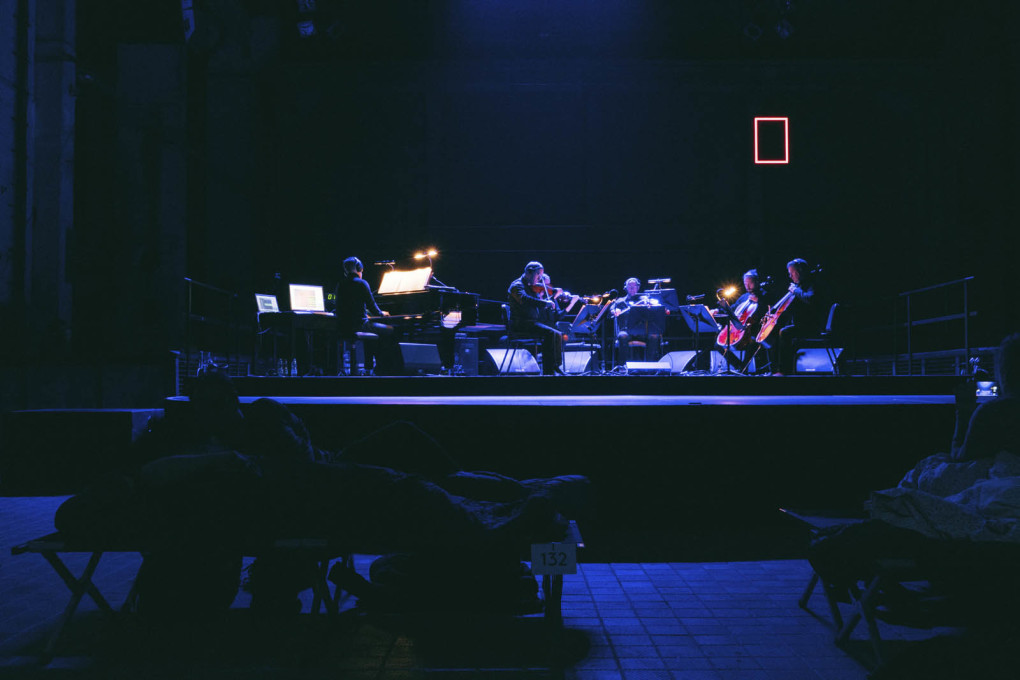
Speaking of what feels natural when it comes to the state of sleep, is it correct that when working on the piece you read much about and were influenced by the work of neuroscientists such as David Eagleman? In what way did your research become part of the work?
When I started to write the piece I had intuitive ideas about the kinds of music that would be appropriate for a sleep project. But of course I’m not a scientist and so had no evidence that those would really provide good conditions for sleep, so I called up David whom I knew from working together on an opera based on his book, Sum: Forty Tales from the Afterlives, in 2012. Thinking about things like that is his day job, so I consulted with him about the kinds of acoustic ideas that would firstly, not disturb people whilst sleeping and secondly, whether there are things that can influence beneficial sleep. It turns out that not only has there been quite a lot of research into this but that the sorts of things which have been identified and isolated as being useful for the informational aspects of sleeping are just the kinds of things I like doing in music anyway. That was a lovely get-out-of-jail free moment; the material I was working on anyway and wanted to pursue turned out to be the “right” material.
In terms of developing the piece, you say you composed it in Berlin and apparently mostly by night – was this something you did by hand or did you also work with the glow of a computer screen?
It depends upon which material I’m working on. All the instrumental music in Sleep is written by hand. The piece also obviously has electronic music within it and that naturally lives more in the synthesiser, tape recorder and computer. Then there’s this whole continuum between the purely instrumental music and the purely electronic music; there’s a lot of hybrid material that falls within this border zone. Some of it is on paper, some of it is in the machines and a lot of it – in fact most of it – is half-and-half.
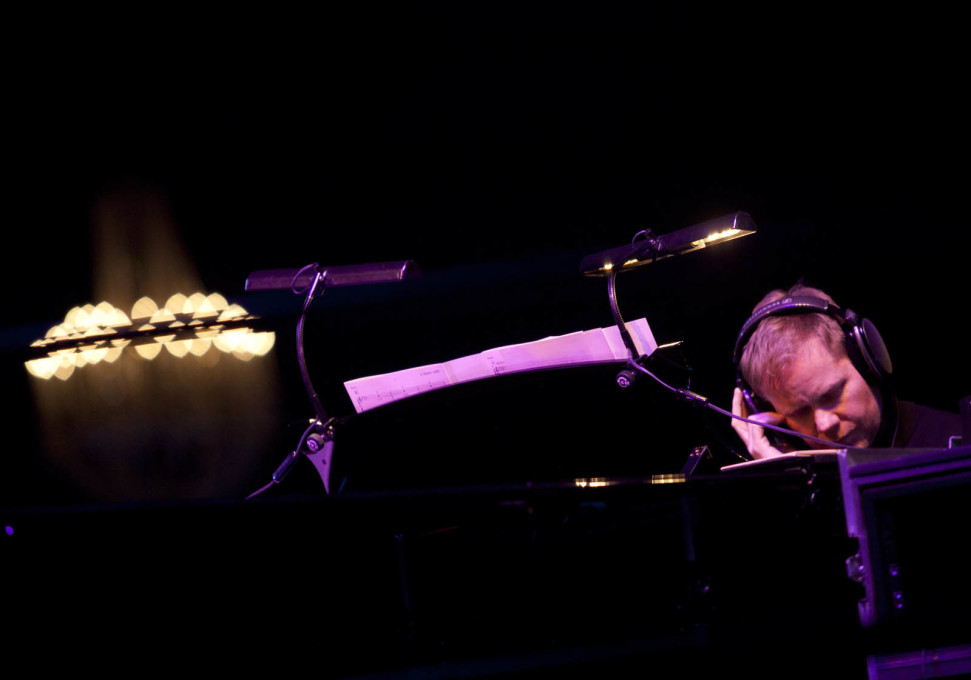
A few years ago you worked together with the artists Random International composing music for a performance in their “Rain Room” project at the Barbican. Do you find yourself often composing pieces “for” places or “with” places? Does that help you give some kind of architectural structure to the work your doing?
Yes in the sense that I like to collaborate. And I’m interested in stories; stories are my favourite things really. Collaboration and conversations with people are what I think of as “research”. Every project is a research project of sorts, a means of finding something out. With Rain Room, Random International and I had been in touch and done other things together but when the idea for that project came along I was so struck by the purely poetic aspect of it; it’s such a charming idea. It was such a great piece it was just a no brainer really. Also from a purely musical point of view, the architecture of the space presented a nice challenge because of course with all that water it’s pretty noisy in there and I enjoyed thinking about how to get beyond that.
Your record “Infra” was composed as a series of episodes - “Sleep” is essentially an eight-hour song. As artists and listeners alike increasingly move away from the structure of the 50-minute album, do you find yourself having to provide less “justification” for the kind of work you do?
I’ve never really thought too much about it to be honest. I just really concentrate on the notes: where they want to go, that’s where I go. Sleep is of course eights hours and the live Rain Room piece is two and a half hours whereas others things I’ve done are more “album-lengthy”.
You have of course produced a shorter, album-length version of “Sleep”, a “daytime” version as it were, recorded for your record label Deutsche Gramaphon…
That’s right, and I think of that as being a “daydream”. I see those two trips through that landscape – the full eight hours and the shorter version – as different records because even though there is a lot of shared material, there’s also a lot of material that they don’t have in common at all. They are quite different experiences.
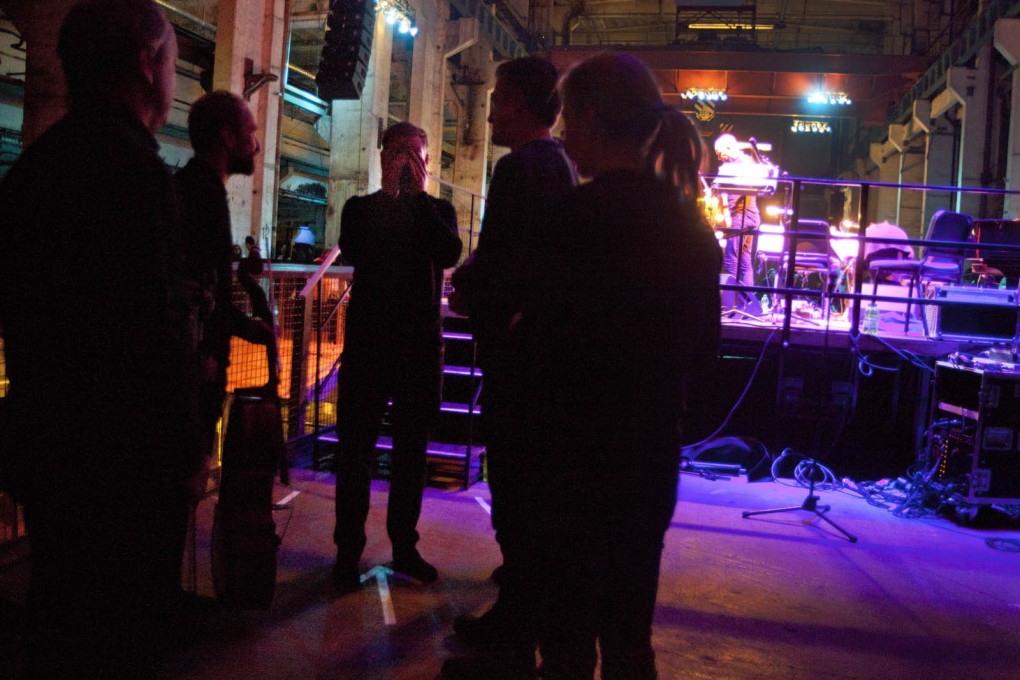
Apart from catching up on your sleep, what’s next?
I’m working on another ballet right now, for the Netherlands Dance Theatre and also working on some music for the third season of an HBO series called The Leftovers.
Thankyou for talking to us – and thankyou for the Kraftwerk concerts, we are still dreaming about them!
No problem – thank you.
–Interview by Sophie Lovell and Fiona Shipwright
Further reading: Did this strike a chord? Did it resonate with you? If that's a resounding yes, then head to uncube Issue No.21: Acoustics!




